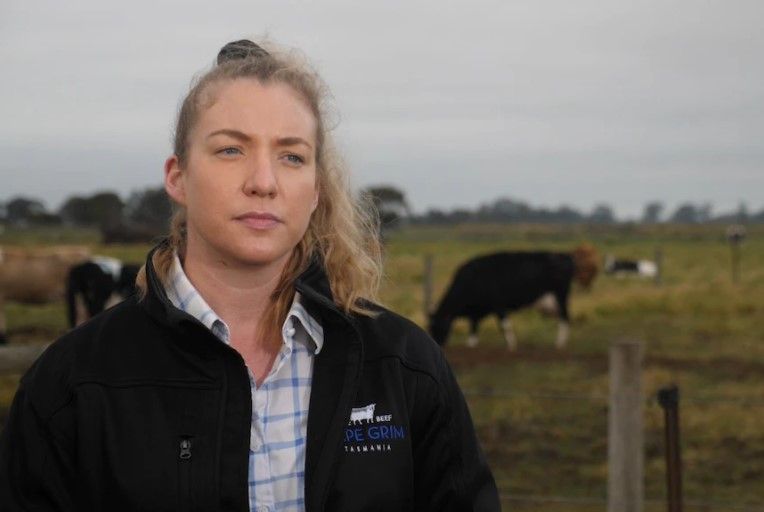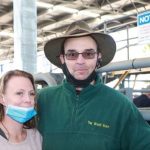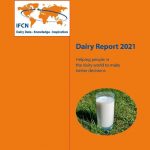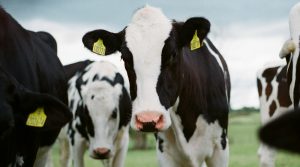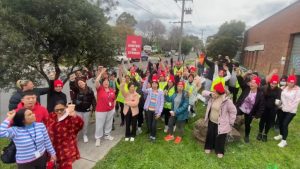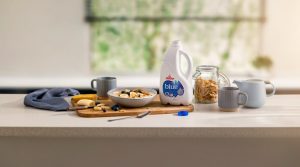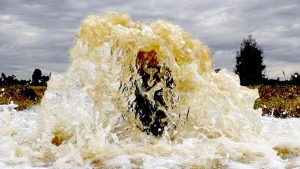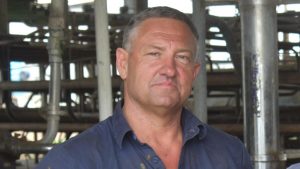
To produce milk, cows need to have calves and every year dairy farmers end up with many more males than they can handle or need.
As a result, almost half of all calves born on Australian dairy farms die within a month.
The majority slaughtered as “bobby calves” — young less than 30 days old that are separated from their mothers.
In an era when consumers demand higher and higher standards, the fate of these calves is becoming a liability.
“There is an overwhelming desire from within the industry to engage constructively with this challenge,” Dairy Australia’s Sarah Bolton said.
An alternative for the unwanted
An answer might be found at a sprawling estate called Westmore in the remote north-west corner of Tasmania.
Westmore has traditionally been a place where beef cows grow fat on windswept grasslands, but nowadays dairy calves also roam the paddocks.
The property is owned by premium meat processor Greenham, which hopes to establish a pathways for surplus dairy calves that is more palatable and profitable.
Rather than cut short the lives of calves, Greenham wants dairy farmers to send them to places like Westmore to be raised to maturity as beef — or do that themselves.
Livestock supply chain manager Jessica Loughland said that kind of scheme would be a “more efficient use of the resource” and improve animal welfare.
“With supply chains overseas in the US and New Zealand, we’re learning that animals from dairy origins can actually produce some really high-quality beef,” she said.
The Dairy Beef Program is being trialled in Tasmania and if all goes well it will be expanded to Greenham’s Victorian meatworks in the dairy regions of Gippsland and Tongala.
But a lot has to happen on the farm before that becomes a reality.
One challenge is genetic — beef cows are bred to be fleshy and fat and dairy cows to produce milk.
Then there are the standards of care Greenham customers expect.
Cows can never be given growth hormones and must be 100 per cent grass fed, which is particularly challenging because dairy calves are generally started on grain.
Greenham wants to help dairy farmers source alternative products such as grain-free starter feed, as well as genetics that create calves suitable for beef and milk production.
But the company also has to convince dairy farmers that they won’t abandon them once the national beef shortage ends and high prices fall.
“We’re really keen to see this succeed in the long-term,” Ms Loughland said.
“The shortage of beef cattle is actually a positive in setting up the supply chain, because it means we’ve got farmers right through the supply chain with an appetite to make this work.”
Matters of taste
Celebrated Tasmanian chef Massimo Mele is intrigued by the environmental and animal welfare benefits of dairy beef, but in the culinary world taste is king.
The dairy beef he has tried in the past was of variable quality, so he is keen to taste a commercial grade product like the one to be produced by Greenham.
“If the product stacks up on the plate and the consumers are into it, then for me it’s a no-brainer,” Mr Mele said.
“But there’s a lot of work that needs to go in to get to that point.
“As an industry, we’re trying to educate consumers that a piece of meat is not just a piece of meat.
“Irrespective of whether it’s a dairy cow or cattle that’s produced for meat, if it’s produced well and in the right way then you’re going to have that quality.”
Greenham is hoping its high standards, access to quality beef genetics and industry expertise will ensure its dairy beef is on par with its other premium products.
While some dairy farmers might need convincing to get on board, some have already seen the writing on the wall.
Avoiding consumer ‘kick-back’
Ringarooma share farmer Stuart Burr reorganised his farm to keep calves out of the abattoir.
He manages the herd to ensure fewer are born and has set aside pasture to raise about 60 extras as dairy beef.
The rest he sends to nearby farmers.
“It hasn’t been too hard, it’s all about a mindset,” Mr Burr said.
The changes have been profitable and, in Mr Burr’s opinion, necessary for the long-term future of the industry.
“If the dairy industry doesn’t evolve, well then there will be a lot of kick-back from consumers and animal rights activist groups that we don’t need,” he said.
“I would like to think within the next 10 years that zero bobby calves and zero euthanasing viable calves will be the standard in the industry.”
